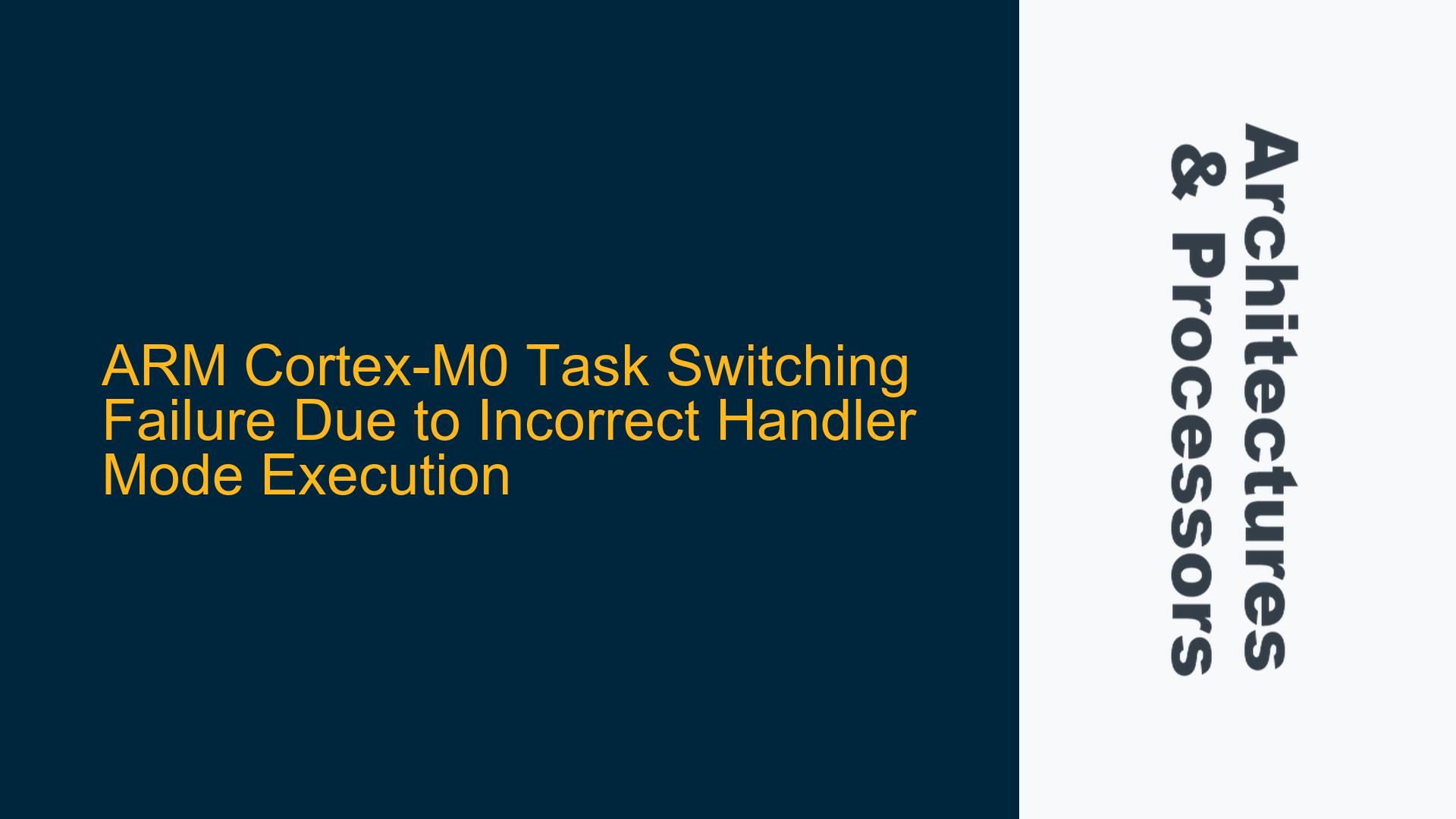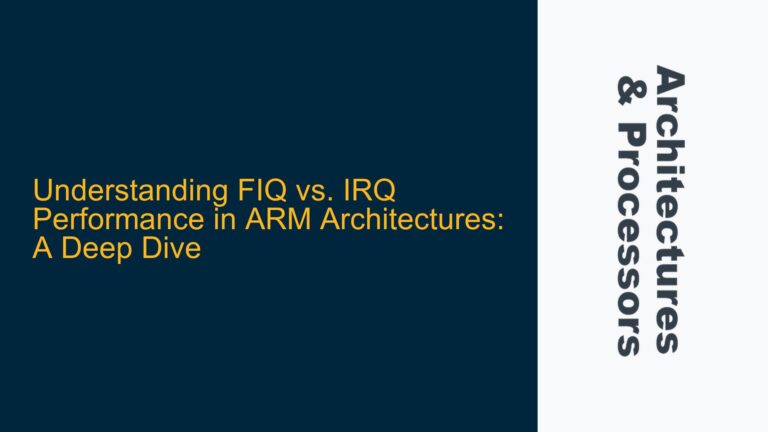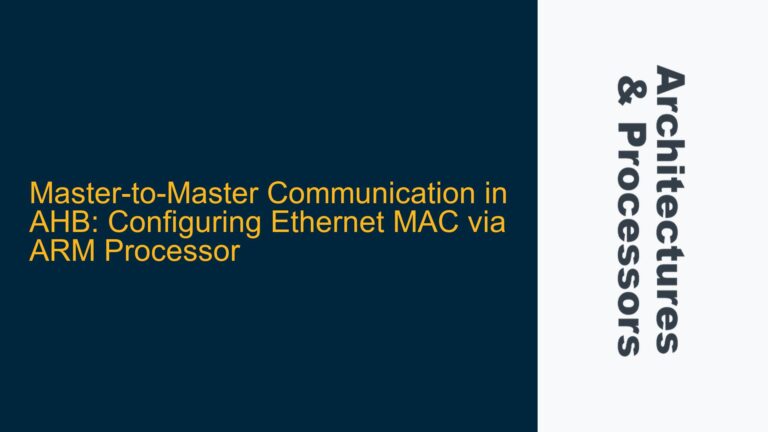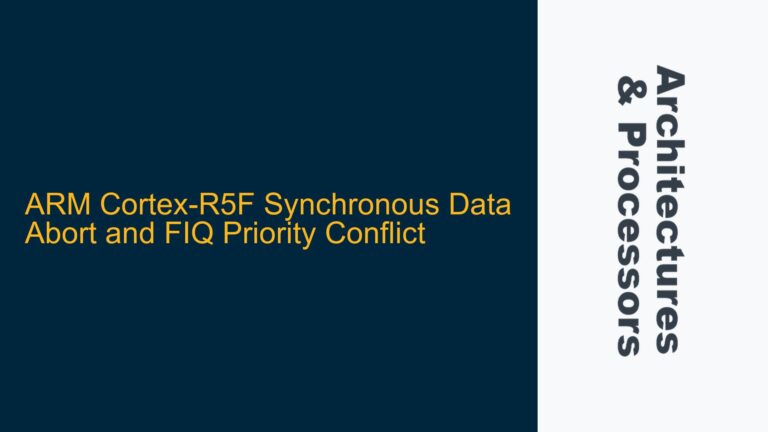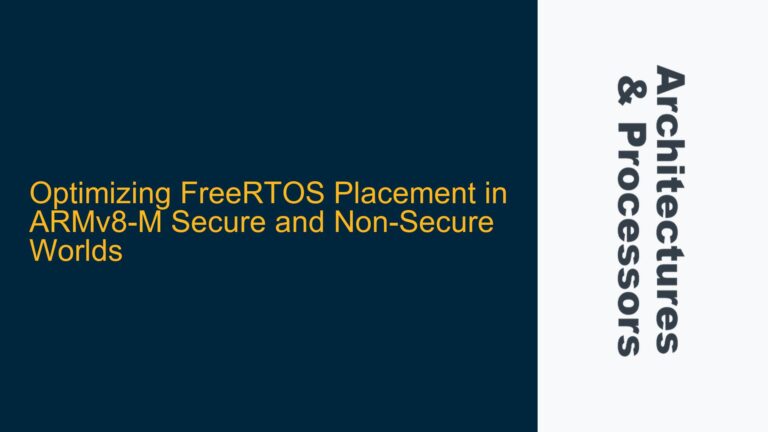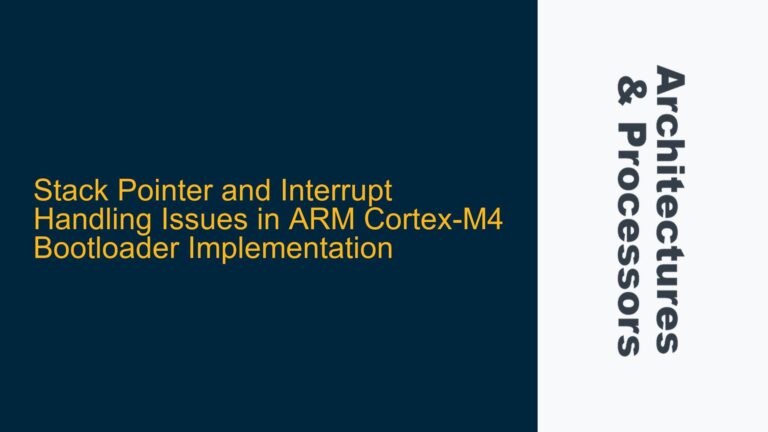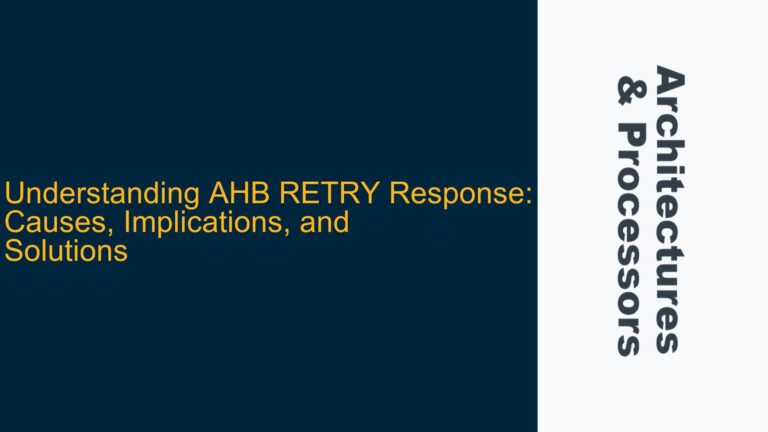ARM Cortex-M0 Task Switching Failure Due to Incorrect Handler Mode Execution
Issue Overview
The core issue revolves around the failure of task switching in an ARM Cortex-M0-based system running the µC/OS-II real-time operating system (RTOS). The system enters an infinite loop at OSStartHang when attempting to switch tasks, but the application runs correctly without the bootloader code. The problem is traced to the incorrect execution mode of the Cortex-M0 processor during the initialization and task-switching process. Specifically, the PendSV exception, which is critical for context switching in RTOS implementations, is not triggered as expected due to the processor being stuck in Handler Mode instead of transitioning to Thread Mode.
The Cortex-M0 processor operates in two primary modes: Handler Mode and Thread Mode. Handler Mode is used for executing exception handlers (interrupts), while Thread Mode is used for normal application execution. The PendSV exception is designed to facilitate context switching by allowing the RTOS to defer the actual task switch until no other higher-priority interrupts are being serviced. However, in this case, the bootloader code calls the application while the processor is still in Handler Mode, preventing the PendSV exception from being serviced correctly. This results in the system hanging at OSStartHang because the task-switching mechanism fails to execute.
The issue is further complicated by the fact that the application runs correctly without the bootloader, indicating that the problem lies in the interaction between the bootloader and the application. The bootloader’s PendSV and SVC handlers are incorrectly configured, causing the application to start in Handler Mode instead of Thread Mode. This misconfiguration prevents the PendSV exception from being triggered, leading to the observed task-switching failure.
Possible Causes
The root cause of the task-switching failure can be attributed to several factors related to the Cortex-M0’s execution mode and the bootloader’s implementation:
-
Incorrect Execution Mode Transition: The bootloader calls the application while the processor is still in Handler Mode. This prevents the PendSV exception from being serviced because the processor never transitions to Thread Mode, where the exception would normally be handled. The PendSV exception is pended but never executed, causing the system to hang at
OSStartHang. -
Misconfigured Stack Pointer (SP) and Link Register (LR): The bootloader’s PendSV and SVC handlers do not correctly configure the SP and LR registers when transitioning to the application. This results in incorrect stack and return address values, which can cause the application to crash or behave unpredictably. The SP and LR must be properly initialized to ensure a smooth transition between the bootloader and the application.
-
Priority Configuration Issues: The PendSV exception is assigned a low priority to ensure that it does not interrupt higher-priority tasks. However, if the current execution context has a higher priority than PendSV, the exception will not be serviced. In this case, the processor remains in Handler Mode with a high-priority execution context, preventing the PendSV exception from being triggered.
-
Bootloader-Application Interaction: The bootloader and application are not correctly synchronized in terms of execution mode and stack configuration. The bootloader’s handlers do not properly prepare the processor for transitioning to the application, leading to the observed task-switching failure. This is evident from the fact that the application runs correctly without the bootloader but fails when the bootloader is included.
Troubleshooting Steps, Solutions & Fixes
To resolve the task-switching failure, the following steps and solutions can be implemented:
-
Ensure Correct Execution Mode Transition: Modify the bootloader code to ensure that the application starts in Thread Mode instead of Handler Mode. This can be achieved by using the
BXinstruction to branch to the application with the correct mode bit set in theLRregister. The following assembly code snippet demonstrates how to transition from Handler Mode to Thread Mode:LDR R0, =Application_Entry_Point ; Load the application entry point address BX R0 ; Branch to the application with mode transitionThis ensures that the processor transitions to Thread Mode before executing the application code, allowing the PendSV exception to be serviced correctly.
-
Correctly Configure Stack Pointer (SP) and Link Register (LR): Ensure that the SP and LR registers are properly initialized when transitioning from the bootloader to the application. The following steps should be taken:
- Save the current SP and LR values in the bootloader’s handlers before branching to the application.
- Restore the SP and LR values in the application to ensure a smooth transition.
- Use the
MSRandMRSinstructions to manipulate the SP and LR registers as needed.
For example, the following assembly code snippet demonstrates how to save and restore the SP and LR registers:
MRS R0, MSP ; Save the current MSP value LDR R1, =App_SP_Value ; Load the application's SP value MSR MSP, R1 ; Set the MSP to the application's SP value BX LR ; Branch to the application with the correct LR value -
Verify PendSV Exception Priority: Ensure that the PendSV exception is assigned the correct priority to allow it to be serviced. The PendSV exception should have a lower priority than other critical interrupts but a higher priority than non-critical tasks. The following code snippet demonstrates how to set the PendSV exception priority:
LDR R0, =NVIC_SYSPRI14 ; Load the address of the PendSV priority register LDR R1, =NVIC_PENDSV_PRI ; Load the desired PendSV priority value STR R1, [R0] ; Set the PendSV priority -
Synchronize Bootloader and Application Execution: Ensure that the bootloader and application are correctly synchronized in terms of execution mode and stack configuration. This can be achieved by adding a synchronization mechanism between the bootloader and application, such as a flag or semaphore, to ensure that the application starts in the correct mode. The following steps should be taken:
- Add a synchronization flag in the bootloader to indicate that the application should start in Thread Mode.
- Modify the application to check the synchronization flag and transition to Thread Mode if necessary.
- Use the
CPSIDandCPSIEinstructions to disable and enable interrupts as needed during the transition.
For example, the following code snippet demonstrates how to implement a synchronization flag:
volatile uint32_t sync_flag = 0; void Bootloader_Handler() { sync_flag = 1; // Set the synchronization flag // Transition to the application } void Application_Entry_Point() { if (sync_flag) { // Transition to Thread Mode asm("CPSIE I"); // Enable interrupts } // Continue with application execution }
By following these steps and implementing the suggested solutions, the task-switching failure in the ARM Cortex-M0 system can be resolved. The key is to ensure that the processor transitions to Thread Mode correctly, the SP and LR registers are properly configured, the PendSV exception priority is set correctly, and the bootloader and application are synchronized. These measures will enable the PendSV exception to be serviced as expected, allowing the RTOS to perform task switching without hanging at OSStartHang.
